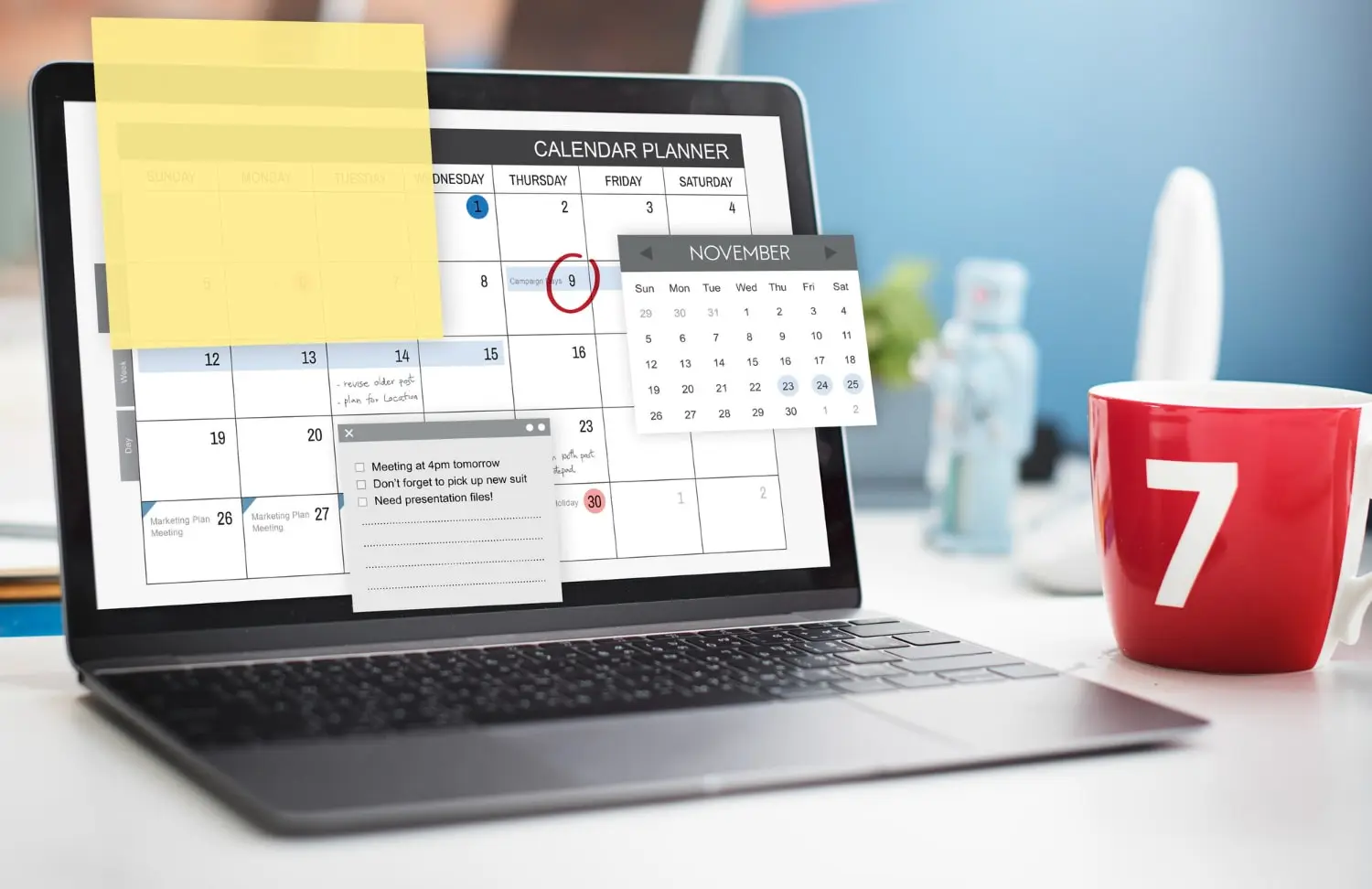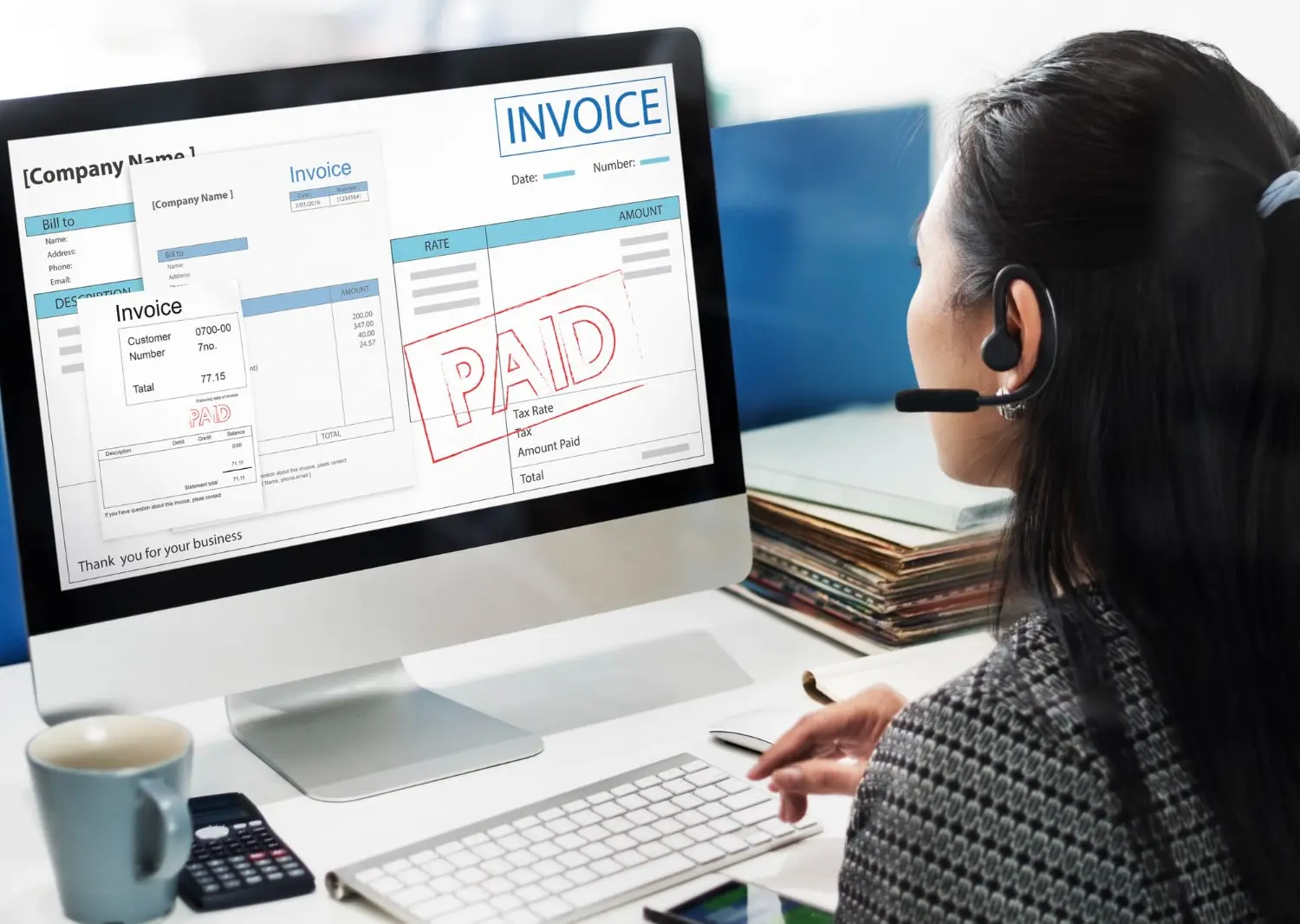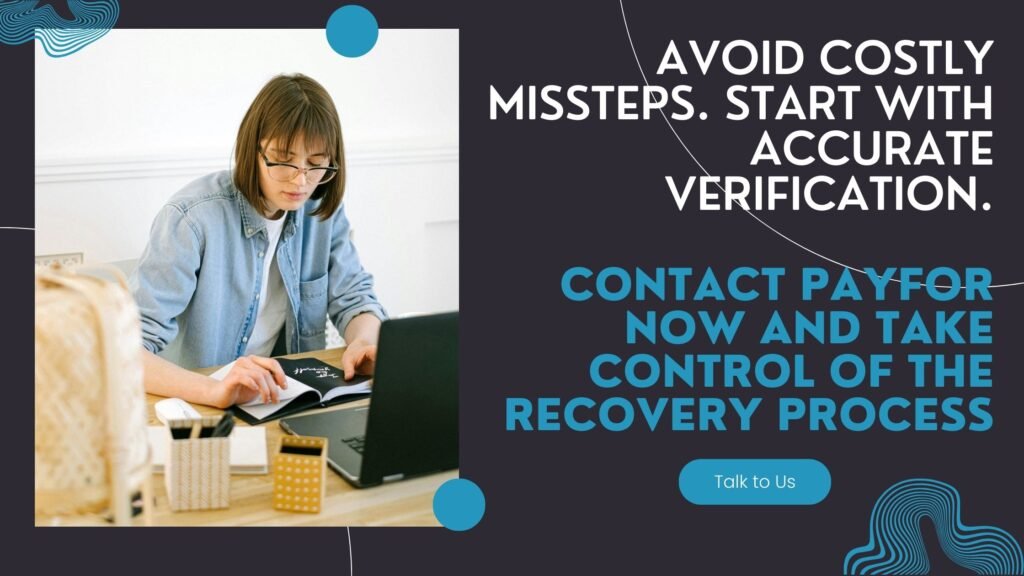What is the AR Process Workflow and Should you Automate it?
Sep 26, 2025

The AR process workflow is a structured approach that businesses use to handle incoming client payments, ensuring timely and accurate collection of owed funds.
At Payfor, we understand that each company has unique needs and challenges, so we create customised AR processes for every client after thoroughly analysing their operations.
This article provides an in-depth look at our experts’ recommended AR process workflow, which comprises several crucial stages. We will emphasize how each step is meticulously designed to significantly improve the overall financial well-being of our clients.
How Does the Customised AR Process Work?
We start the process by thoroughly analysing the client's business operations, financial structure, and AR history. This detailed assessment allows us to identify key areas that need attention and improvement.
Once we have identified the weak points of an existing AR process and deeply understand the client’s business, we design a customised AR strategy that aligns with their operational goals and financial objectives. This strategy addresses the already existing issues and includes tailored invoicing schedules, personalised communication plans for payment reminders, and specific procedures for handling overdue accounts. Our customised approach ensures that the AR process is not only efficient, but also effective in maintaining healthy cash flow and minimising late payments.
We offer multilingual support and adapt to different regulatory environments, catering to the diverse needs of our global clients. Our AR process is flexible and scalable, evolving with the client's business growth and changing requirements.
First Point of Contact
We begin by evaluating new clients to assess their creditworthiness and payment history. This initial evaluation helps us understand the client's financial stability and reliability, ensuring that we can tailor our accounts receivable process to meet their specific needs and confirm the client's company is solvent. Our standard investigation process includes:
- Verifying the legal name of the company.
- Consulting Companies House (if this information is publicly available in the respective country).
- Reviewing the debtor's website and social media profiles.
- Examining open sources (such as OpenCorporates, ZoomInfo, etc.) to determine the company structure, key decision-makers, and financial information.
- Investigating any investments received by the company.
Once the evaluation is complete, we onboard the new client with a welcome email. This email is a formal introduction and sets clear expectations regarding payment terms and processes. It typically includes essential information such as invoice submission procedures, payment deadlines, and contact details for any AR-related queries. The welcome email also establishes a positive and professional tone, reinforcing the importance of timely payments and open communication.
The welcome email provides detailed instructions and a point of contact to ensure clients are well-informed about their obligations and the AR process. This proactive approach helps prevent misunderstandings and payment delays, fostering a smoother transaction flow. It also demonstrates our commitment to transparency and customer service, which can enhance client trust and satisfaction.
Invoice Management
This step involves generating accurate and detailed invoices that reflect the goods or services provided, the agreed payment terms, and the due dates. We ensure that invoices are consistent, professional, and compliant with relevant regulations.
Once invoices are issued, the next step is sending them to clients. Timely delivery of invoices is crucial for prompt payment. Payfor employs multiple delivery methods, including email, postal mail, and online client portals, to ensure that clients receive their invoices in the manner that suits them best. This flexibility helps accommodate various client preferences and enhance their overall experience. Tracking the dispatch and receipt of invoices is also an integral part of this stage, ensuring that any delivery delays are promptly identified and addressed.
We keep detailed records of issued and sent invoices, which provide valuable data for future financial planning and auditing purposes. Regular follow-ups ensure clients know impending due dates, further encouraging timely payments. This systematic approach to invoice management is fundamental to effective AR processes, ultimately contributing to the financial health and sustainability of the business.
Chasing Campaigns
Chasing an invoice is a crucial part of the AR process, designed to ensure timely payments and maintain a healthy cash flow. These campaigns are typically segmented into three stages: before due, early overdue, and late overdue.
Before Due: In this initial stage, pre-emptive reminders are sent to clients a few days before the invoice due date. The purpose of these reminders is to encourage timely payments by gently prompting clients that their payment is approaching. This can be done through polite emails or phone calls, emphasising the due date and providing any necessary payment details.
Early Overdue: If a payment has not been received by the due date, the invoice moves into the early overdue stage. At this point, follow-up communication is initiated immediately, usually within a week of the missed payment. The tone remains courteous but firm, reiterating the overdue status and requesting prompt payment.
Late Overdue: We move to the late overdue stage for invoices that remain unpaid beyond the early overdue period. This stage involves more assertive follow-up actions, as the likelihood of payment decreases the longer an invoice remains outstanding. Communication may include stronger language and a clear outline of potential consequences for continued non-payment, such as late fees or legal action. It could also involve engaging commercial debt collection agencies.
Reports & Evaluation
The final stage includes thorough reporting and evaluation to ensure effective cash flow management and to highlight areas for improvement.
Reconciling payments is a critical task that involves matching incoming payments with the corresponding issued invoices. This process ensures that all transactions are accurately recorded, discrepancies are identified, and financial records are kept up to date.
Flagging defaulted accounts for debt collection is another essential component of this stage. Accounts that consistently fail to meet payment deadlines are marked for further action. This involves carefully assessing which debts require escalation to debt collection agencies.
Regular plans and reports on collections provide valuable insights into the effectiveness of the AR process. These reports typically include key AR metrics such as days sales outstanding (DSO), collection rates, and the age of receivables. Analysing these metrics helps businesses understand their cash flow trends, identify problematic areas, and make informed decisions to enhance their AR strategies.
Detailed reporting also enables continuous improvement by pinpointing specific issues and tracking the success of implemented changes. For instance, if the reports indicate a high number of late payments from a particular client, businesses can adjust their credit policies or follow-up procedures for that client. Additionally, regular evaluation ensures compliance with financial regulations and internal policies, reducing the risk of legal issues.
Should You Automate AR Processes or Manually Send Invoices?
Deciding whether to automate accounts receivable (AR) or manually send invoices is a significant dilemma for business owners accustomed to operating in a certain way.
While manual invoicing enhances more personalised customer relationships and flexibility, automation offers streamlined workflows, fewer errors, and faster payments.
How Does AR Automation Work?
Accounts receivable automation uses advanced software to streamline invoicing and payment collection. It automatically generates invoices from templates linked to ERP or CRM systems and sends them electronically to customers to save time. Automated reminders for overdue payments eliminate manual tracking, ensuring prompt follow-ups.
When customers make payments, the automation software matches them to corresponding invoices, streamlining reconciliation and reducing errors. AR automation also provides real-time tracking and reporting, offering detailed insights into outstanding receivables and cash flow.
Advanced features may include predictive analytics to forecast AR and payment trends, and identify potential issues early. Integration with other financial systems ensures that financial data remains up-to-date and accurate.
AR Automation Advantages
Automating accounts receivable processes offers numerous advantages for businesses seeking efficiency and accuracy. Below are some advantages that can have a positive impact on business operations:
- Enhanced accuracy and error reduction: Automating invoicing and payments reduces manual errors, ensuring invoices are consistently generated and sent correctly. Automation extends this accuracy to reconciliation tasks, more precisely, matching payments with invoices.
- Significant time and cost savings: Automation reduces manual invoice processing and payment reconciliation, saving time and resources for more strategic tasks. It also slashes administrative costs linked to paper-based systems and manual data entry.
- Improved cash flow management: Automating invoicing and payments accelerates receivable collections, improving cash flow predictability and liquidity. Automated reminders for overdue payments reduce outstanding balances, boosting financial health.
- Real-time monitoring and reporting: Automation continuously tracks invoice statuses and payments, providing real-time visibility into cash flow. Detailed reports from automated systems identify trends, forecast cash flows, and support timely financial decisions.
- Better customer experience and satisfaction: Automated invoicing ensures prompt, accurate billing, reducing delays and errors that could frustrate customers. Efficient payment processing improves turnaround times, enhancing satisfaction levels.
AR Automation Disadvantages
While AR automation offers advantages, it also presents potential drawbacks that businesses should consider before investing in any tool:
- Initial setup costs and investment: Businesses incur initial costs for purchasing automation software, training staff, and integrating with existing systems. Upgrading hardware adds to this investment. Businesses should consider their size and scale to determine if the investment is worthwhile.
- Complexity of implementation: Transitioning to automated systems from manual processes requires careful planning and execution. Integrating with existing IT infrastructure can cause disruptions and potential cybersecurity threats. Training employees and ensuring cross-department compatibility further complicate the automation process.
- Dependence on technology and system downtime: Technical issues can disrupt financial operations, delaying invoicing and payments. Plus, reliance on automated systems requires robust IT support and regular maintenance to minimise the risk of prolonged outages.
- Potential job reductions and employee resistance: Implementing AR automation can lead to job reductions as manual tasks are automated. This may cause employee resistance due to job security concerns and workflow changes.
- Security and data privacy concerns: Storing sensitive financial information electronically heightens the risk of data breaches and cyberattacks, necessitating robust security measures and adherence to data protection regulations to safeguard customer information.
How Does AR Manual Invoicing Work?
Manual invoicing in accounts receivable begins with creating invoices based on sales orders or services provided, using dedicated templates or forms. These invoices are then distributed to customers by mail or electronically as PDF attachments.
After sending invoices, businesses manually track payment receipts, recording each against the corresponding invoice. It requires diligent monitoring to ensure accurate accounting. Manual follow-up is necessary for overdue payments to remind customers and promptly settle outstanding balances.
AR manual invoicing requires reconciling payments with the general ledger, ensuring accurate financial records by comparing payment details with invoices, and updating company accounts accordingly. Detailed manual records of invoices, payments, and reconciliation are kept for auditing and financial reporting, maintaining regulatory compliance, and providing a clear financial overview.
AR Manual Invoicing Advantages
Manual invoicing offers distinct advantages that cater to specific business needs and preferences:
- Personalised customer interaction: Manual invoicing in AR enables personalised customer interaction through tailored invoicing and direct communication, fostering trust and satisfaction by addressing queries promptly and adapting to customer preferences.
- Flexibility and customisation: It offers the flexibility to customise invoices to meet customer preferences, enhancing satisfaction with personalised details. It enables swift adjustments to invoicing processes, effectively adapting to changes in business or customer demands.
- Low initial setup costs: Manual invoicing in AR offers low initial setup costs, accessible for smaller businesses and startups without significant investments in software or infrastructure. Minimal training for manual processes reduces costs associated with staff education and onboarding.
- Easier to control for small businesses: Small businesses can oversee invoicing closely, monitor finances effectively, and make swift decisions. It offers flexibility in adapting strategies to meet operational needs and customer preferences without relying on complex automation.
- Minimal dependence on technology: It reduces reliance on technology, enabling efficient operations with basic office tools and avoiding disruptions from technological failures. This simplifies operations by bypassing complex software integration.
AR Manual Invoicing Disadvantages
Manual invoicing in AR presents challenges that underscore potential limitations in efficiency and scalability compared to automated systems.
- Time-consuming and labor-intensive processes: Invoice creation, distribution, and payment tracking require extensive manual effort, potentially causing delays in invoicing cycles and slower payment collections.
- Higher risk of human error: The manual handling of invoices and payment tracking increases the likelihood of inaccuracies that may lead to discrepancies in financial records.
- Slower cash flow management: Manual invoicing in AR can lead to slower cash flow management due to time-consuming invoice creation and processing. This can potentially extend payment periods and impact liquidity and financial planning.
- Limited scalability and growth potential: It has limited scalability and growth potential due to its reliance on manual processes that can struggle with increased invoicing volumes, potentially causing bottlenecks and delays.
- Difficulty in tracking and reporting: Facing tracking and reporting challenges due to manual data entry and record-keeping, leading to errors in financial reports that impede accurate insights into financial performance and receivables management.
How to Make the Correct Choice Between AR Automation vs. Manual Invoicing?
When deciding between AR automation and manual invoicing, it's crucial to consider the business's specific needs and scale. Large enterprises, particularly those dealing with high volumes of transactions, can greatly benefit from AR automation. This system streamlines processes, reduces human error, and enhances efficiency, making it ideal for corporations with complex invoicing requirements and substantial accounting teams. Additionally, businesses experiencing rapid growth might find AR automation indispensable in managing their increasing workload without proportionally increasing their staff.
On the other hand, smaller businesses or startups with relatively fewer transactions may find manual invoicing more suitable. This method allows for greater personalisation and direct control over each invoice, which can be advantageous for maintaining close customer relationships. Companies that prioritise bespoke services or have unique billing structures might also prefer manual invoicing, as automated systems might lack flexibility. Businesses with limited budgets might opt for manual invoicing to avoid the initial investment and ongoing costs associated with automation software.
Ultimately, the choice hinges on the volume of transactions, the need for efficiency versus personalisation, and budget considerations. By aligning the invoicing method with the business’s operational scale and financial resources, companies can effectively optimise their accounts receivable management processes.
At Payfor, we combine proven processes with hands-on support to keep your receivables flowing. Contact us today to learn how we can strengthen your AR management.
Disclaimer:
This blog post is intended for informational purposes only and should not be construed as legal advice. The information provided in this post is based on general principles and may not apply to specific legal situations. Laws and regulations vary by jurisdiction and can change over time. Readers are advised to seek professional legal counsel before making any decisions based on the information provided in this blog post. Payfor Ltd is not a law firm and does not provide legal services. The company disclaims any liability for actions taken based on the contents of this blog post.
More Blogs & Insights

How to Chase an Overdue Invoice and How to Implement Effective Reminder Systems

What is the AR Process Workflow and Should you Automate it?

Is It Time to Outsource Accounts Receivable? 5 Signs to Look For and a Cost-Benefit Analysis

Accounts Payable vs Accounts Receivable Key Differences Explained

Comprehensive Guide on Debtor Days Calculation: Formula, Examples and Strategies

How to Handle Business Invoice Disputes With Clients?

What is Accounts Receivable and the Equation for Net Accounts Receivable

The Impact of AR Delays and Strategies for Efficient Accounts Receivable for Spanish Businesses

What is DSO: Learn How to Improve Payment Speeds

How Currency Fluctuations Complicate International Debt Collection

Phoenixing vs Insolvency: Knowing the Difference Could Save Your Business Thousands

Why Small Businesses Are the Biggest Victims of Late Payments in 2025

How Payfor Secured €600,000 for a Ukrainian Tech Firm Against a UK Giant

Spotting Compliance Gaps in Debt Collection Before They Cost Your Business

The Dangers of Partnering with a Debt Collection Agency Without Real Legal Backing

How to Overcome Language and Cultural Hurdles in International Debt Collection

Why Too Much Paperwork Hurts Debt Collection Results

What a Good Recovery Rate Really Looks Like in Global Debt Collection Agencies

How Overcomplicated Debt Collection Processes Delay Your Payment

How Poor Debtor Tracing Damages Your Reputation and Delays Recovery

Why Some Debt Collectors Fail After First Contact and How to Ensure Full Recovery

The Problem with One-Size-Fits-All Debt Collection Strategies and How to Get Better Results

Why You Should Be Concerned If Your Debt Collector Doesn’t Give Regular Updates

The Risks of Misidentifying Debtors in International Debt Recovery and How to Prevent Them

How to Avoid the Costly Mistake of Aggressive Debt Recovery Without Pre-Action Steps

Why Paying Upfront to Other Debt Collectors Often Leads to Bigger Losses

How US Investors Can Recover Money from Failed International Joint Ventures

The Best Way for American Exporters to Collect from Foreign Buyers

How US Businesses Can Recover International Debts Without Expanding Their Legal Team

Recovering Debts After a Business Acquisition or Merger

Understanding the Commercial Debt Collection Struggles Faced by Startups

How Payfor Recovered a $780,000 Hollywood Merchandising Dispute

How an Indian Software Developer Got Paid with Help from Payfor
Payfor was able to collect the outstanding debt by negotiating a resolution between the two companies.

What is Corporate Recovery? How to Recover a Six-Figure Corporate Debt
A Comprehensive Guide to Collecting £100k-£250k Unpaid Invoices from International Businesses

How a Ukrainian Tech Company Secured Payment from a Saudi Debtor
The Ukrainian company had done everything they needed...

Why Most Commercial Debts Remain Unpaid Despite Hiring a Lawyer

How a Portuguese Recruitment Firm Recovered 80% of Its Outstanding Invoices
A recruitment company based in Portugal was owed money from clients in the UK, Portugal and Germany.

$750,000 Production Loan Default Recovered Through Payfor Legal Recovery

How Payfor Recovered a $450,000 Location & Equipment Rental Dispute for a Hollywood Client

The Psychology Behind Legal Recovery and Why It Works

What Legal Recovery Looks Like with Payfor on Your Side

When Debt Collection Fails and Legal Action Becomes the Only Way Forward

Hollywood Insurance Claim Dispute Worth $510,000 Resolved with Payfor’s Help

Securing Payment for Unpaid Post-Production Services Worth $430,000

How We Overcome Frustrating Debt Collections
A Welsh SaaS business was owed money by a London financial services company.

What is Global Debt Collection?
Global debt collection is when a collection agency or company actively tries to collect debts from debtors across international borders.

Commercial Debt Collection Laws in the UK: A Comprehensive Guide
Understanding the legal framework governing commercial debt collection is paramount for both creditors seeking restitution and debtors aiming to protect their rights.

How to Collect Debt From a Business That Repeatedly Refuses to Pay What They Owe
At the start of the Covid Pandemic in the UK early 2020, companies started owing each other money left, right and centre…

How Payfor Helped a Hollywood Studio Recover $612,000 in Sponsorship Fees

How Payfor Helped Resolve a $750,000 Box Office Revenue Sharing Dispute in Hollywood

How Payfor Helped Resolve a High-Value Hollywood IP Infringement Case

How Payfor Resolved a $620,000 Dispute on a Hollywood Distribution Agreement

How Payfor Recovered a $750,000 Talent Payment for a Hollywood Actor

Can You Recover Debt from a Defunct Company? What to Know About Insolvency and Liquidation

What Happens After a Court Judgment? Debt Enforcement Stages Explained

Resolving a $190,000 Licensing Dispute Between Two Record Labels

How Payfor Helped A Record Label Recover Six-Figure Copyright Infringement Damages

How Payfor Helped Recover Over $400,000 in Unpaid Royalties for a New York Record Label

How Payfor Supports Energy Sector Clients in Recovering High-Value Debts

Additional Actions Payfor Pursues Without Further Notice

What Payfor Does If a Debtor Doesn’t Pay Within 5 Days

Legal Recovery for Ad Agencies Left Hanging After Production

Why Delaying Legal Action Can Weaken Your Case

The Dangers of Legal Action for Debtors

Introducing Our Enhanced 30-Day Chase Campaign

How Payfor Recovered $500,000 from an Elusive Debtor in UAE

The $1 Million Debt That Payfor Recovered When Everyone Else Had Given Up

The Three Essential Stages of Effective Debt Collection

Why Debtors Respond to Us When They Ignore Everyone Else

Why Debt Recovery in the Construction Industry Is So Complex—And How to Overcome It

Is Debt Recovery Always Aggressive? Debunking the Myth

£100,000 Recovered from a French Startup by UK-Based Technology Company

The True Cost of Unpaid Invoices for UK Businesses

$120,000 Recovered from a California-Based Tech Giant for an Israeli Software Firm

When Is a Debt Truly Unrecoverable? Knowing When to Write It Off

Top 5 Debtor Excuses We Hear All the Time—And How We Handle Them Professionally

When to Escalate: Signs It’s Time to Hire a Debt Collection Agency

The Psychology of a Debtor: Why They Delay—and How to Get Paid Faster

How Debt Collection Agencies Are Evolving in a Tech-Driven World

Why Businesses Worldwide Trust PayFor with Their Debt Recovery

What Businesses Are the Most Vulnerable to Debt?

7 Skills Every Successful Debt Collector Must Have

How Debt Recovery Agencies Work Within Regulatory Frameworks

What to Expect When Hiring a Debt Collection Agency

A Costly Lesson in Market Vulnerability

How We Recovered a SaaS Subscription Debt Without Litigation

How Persistence Secured a $36K Software Debt Recovery

When a Strong Contract Isn’t Enough: Navigating a Disputed £35K Recruitment Debt

Helping a Global IT Company Recover £37K from a Venture-Backed Biotech Firm

Turning a 600-Day Debt Stalemate into a Strategic Settlement

Leveraging Legal Pressure in a Recruitment Fee Dispute Against a New Jersey Real Estate Development Company

Cloud Infrastructure Billing Dispute between a Global Server Platform and a Ukrainian IT Company

Strategic Recovery in a Cross-Border Financial Dispute between a Ukranian App Developers and a Dublin-based Piracy Protection Platform

Effective Debt Recovery for a London-Based IT Firm

Successful Debt Recovery for a Silicon Valley Software Company

How to Effectively Manage Overdue Payments with Debt Collection Agency

How No Win No Fee Arrangement Works in Debt Collection

Balancing Recovery and Customer Retention in Business Debt Collection

The Evolution of Commercial Debt Collection Practices

Legal Considerations in Commercial Debt Collection Cases

Cereal Entrepreneurs: Mastering the B2B Debt Collection Game

4 Successful B2B Debt Collection Cases

How Commercial Debt Collection Services Help Large Corporations

Top 5 Challenges in B2B Debt Collection and How to Overcome Them

How to Collect Debt From a Business That Repeatedly Refuses to Pay What They Owe?
Coping with a business that repeatedly refuses to pay its debts can significantly impact your cash flow and hinder your company's growth.

Out-of-Court Settlements for Ukrainian Businesses Commercial Debt Collection
As enterprises strive to maintain cash flow and financial stability, resolving commercial debt disputes efficiently becomes crucial for Ukrainian businesses.
How to Track Down a Debtor That’s Gone Missing?
Tracking down a missing debtor can be challenging, but several effective methods can increase your chances of success.

How the Letter Before Action Works in Commercial Debt Collection
One of the most effective tools at a creditor's disposal is the letter before action (LBA). This formal notice is a precursor to legal proceedings and offers a final opportunity for debtors to settle their obligations without court intervention.

Steps to Take Before Engaging a Debt Collection Agency
Hiring a commercial debt collection agency can be immensely helpful for businesses facing challenges in recovering outstanding debts. Professional agencies possess the expertise and resources necessary to efficiently manage business debt recovery.

How to Deal With Reactions to Your Commercial Debt Demand Letter?
Learn how to effectively manage and respond to a range of reactions received following the issuance of your commercial debt demand letter.
Business Debt Collection Best Practices for Israeli Tech Businesses
As the Israeli tech industry thrives on continuous development and investment, managing outstanding debts efficiently becomes crucial to ensure that financial stability is not compromised. Implementing best practices for debt collection tailored to each firm's unique needs can significantly mitigate these risks.

What is Commercial Litigation?
Defined as the legal process of resolving business-related conflicts through the court system, commercial litigation covers many issues - breach of contract, business torts, shareholder disputes, and intellectual property disagreements.

Commercial Debt Collection for Small and Medium Enterprises (SMEs) in Ukraine
Small and medium enterprises (SMEs) play a crucial role in Ukraine’s economic growth and job creation. However, many SMEs grapple with cash flow challenges due to market fluctuations.

The Role of Professional Debt Collection Agencies for Ukrainian Businesses
In Ukraine's dynamic business scene, managing outstanding business debts is challenging and can strain resources.

Best Strategies for Commercial Debt Management: Advice From an Expert
In today's competitive landscape, businesses must navigate complex financial relationships while balancing cash flow and creditor obligations.

How to Recognise Early Warning Signs of Business Debtors?
Recognising the early signs of a potential debtor is crucial for maintaining a business's financial health. Many companies encounter clients who, despite initial promises, fail to uphold their payment obligations, which can significantly impact cash flow and operational stability.

How Can You Recover a Debt in the US When You Are in Portugal?
Distance, legal disparities, and practical hurdles create complexities for Portuguese businesses seeking to recover commercial debts from businesses in the United States.

Commercial Debt Collection Laws for Ukrainian Businesses
Ukrainian businesses frequently grapple with managing financial obligations and recovering debts. The legal framework for commercial debt collection is vital for maintaining economic stability and fair market practices.

What to Do When a Client Cancels a Business Agreement?
When a client cancels a deal, it can significantly disrupt your business operations, impacting both your financial stability and strategic planning.

International Commercial Debt Collection Laws Explained
International debt collection involves pursuing debts from debtors in different countries - a challenge heightened by diverse legal systems, cultures, and language barriers.

What Happens If You Lose a Commercial Debt Collection Lawsuit?
Unpaid debts can pose significant challenges to business financial stability. When traditional methods fail to resolve these outstanding dues, companies may take legal action, such as a commercial debt collection lawsuit.

When to Use a Commercial Debt Collector?
Businesses often face challenges in recovering payments from clients or customers when managing outstanding debts.

How Long Can You Legally Be Chased for a Commercial Debt in the UK?
In the UK, the statute of limitations for pursuing a commercial debt is typically six years, starting from the last acknowledgment or payment date.

What is Commercial Debt Factoring in Business?
Companies often seek innovative solutions for cash flow management and financial challenges, such as commercial debt factoring, where accounts receivable are sold to a third-party factor at a discount.

How to Recover a Commercial Debt in the US When You Are in Israel?
If you are an Israeli business seeking to recover a commercial debt owed to you in the United States, it's essential to understand the intricacies and procedures involved in such a pursuit.

Legal Procedure for Commercial Debt Recovery
Commercial debt recovery can be a complex and challenging process for businesses. From unpaid invoices to overdue payments, encountering debtors unwilling to settle outstanding dues is a common predicament.

How Do Businesses Benefit From Offshore Jurisdictions?
Offshore jurisdictions like Switzerland and the Cayman Islands are a prevalent strategy for companies engaged in commercial debt collection or aiming to enhance their financial and tax planning initiatives.

How Do You Write a Demand Letter for Commercial Debt?
Unpaid business debts can be challenging for commerce businesses. When traditional debt collection methods fail, turning to legal recourse becomes necessary.

How to Avoid Late Payments in B2B Transactions?
Late payments pose a significant challenge for businesses, impacting cash flow, profitability, and overall financial stability.

Commercial Debt Statistics: Facts and Numbers
Commercial debt plays a vital role in business finances, acting as both a driver for growth and a potential indicator of a company's financial stability.

Why Payfor Is Different From Other B2B Collection Agencies?
Unlike other agencies, Payfor prides itself on its unique approach to commercial debt recovery, blending industry expertise with a commitment to client satisfaction.

How to Calculate Business Debt: A Comprehensive Guide
Understanding and accurately calculating business debt is essential for maintaining financial stability and making informed decisions.

How to Recover a Debt in the US When You Are in Egypt?
Given the geographical and legal barriers, recovering a debt in the United States while residing in Egypt can present a formidable challenge.

What are Commercial Debt Collection Challenges for Startups?
Startups often encounter unique hurdles when it comes to recovering owed funds. From establishing effective credit policies to navigating legal complexities, startups must navigate myriad obstacles to ensure timely payments and maintain financial stability.

Negotiation Tactics in Debt Recovery: The Psychology of Persuasion.
Commercial debt recovery is an essential, yet intricate, facet of business operations that requires an amalgamation of skills—from legal understanding to business acumen.

How to Recover Debt in the US When You're in Ukraine?
Navigating the complexities of debt recovery across international borders presents unique challenges for businesses, particularly when seeking to recover debts owed in the United States while operating from Ukraine.

Is Legal Recovery the Answer When Your Business is Owed Money Across Borders?
When your business faces the challenge of recovering owed money from companies operating across international borders, legal recovery emerges as a strategic imperative.

How Do Commercial Debt Collection Recovery Campaigns Work?
Commercial debt collection recovery campaigns are intricate processes designed to retrieve outstanding debts owed by businesses to creditors.

Why Jurisdiction Is the Most Critical Factor in Commercial Debt Collection?
When it comes to commercial debt collection, one question often trumps all others: "What is the key most important factor when chasing a debt?"

What is the Difference Between Arbitration and Issuing Legal Proceedings/Litigation?
The choice between arbitration and litigation is a pivotal decision that can shape the course of dispute resolution.

What is Amicable Recovery?
Amicable Recovery is a consensual and cooperative debt collection method that aims to settle outstanding payments without resorting to judicial measures. This process often commences with a courteous reminder, followed by mutually beneficial negotiations, in an effort to secure payment.

What is Jurisdiction in Global B2B Debt Collection?
Jurisdiction determines the legal authority and framework within which commercial debt collection efforts can be pursued across international borders.

How to Determine if a Debtor is Solvent Enough to Repay Debt: An Expert Guide
In the intricate world of commercial debt collection, one of the most challenging yet imperative tasks is assessing the solvency of a debtor.

Small Business Debt Collection: A 7 Point Guide
This guide covers seven key points, ranging from understanding legal frameworks to negotiating payment plans. It equips small business owners with the knowledge and tools necessary to successfully pursue outstanding debts.

What is Commercial Debt Collection?
Commercial debt collection is when a third-party agency recovers unpaid debts owed by one company to another. The recovery agency contacts the company owing the debt requiring it to pay the debt.

What Are Commercial Debt Collection Challenges for US Companies?
Commercial debt collection presents myriad challenges for US businesses, including complex jurisdictions and contractual elements.

How Much Debt Should a Business Have?
Striking the right balance between business debt and equity is paramount for maintaining financial health and sustaining growth.

Commercial Debt Collection Challenges and Solutions for Ukrainian Businesses
In today's economic climate, Ukrainian companies encounter many obstacles when recovering commercial debts.

How is Bad Debt Defined in Business: A Short Explanation
The term "bad debt" holds significant importance for businesses and can often signal trouble for enterprises of varying sizes.

What is a Creditor in Business?
A creditor is a party that has provided goods, services, or monetary resources to a business on credit, expecting repayment within an agreed timeframe.

What is a Commercial Debt for Business?
Commercial debt is the amount of money one business entity owes to another for goods or services provided on credit terms.

What Should Businesses Expect From a Modern-Day Debt Recovery Agency?
Modern debt recovery firms are redefining industry standards by offering strategic financial solutions alongside traditional collection efforts.

How to Safeguard Your Business: Expert Tips for Choosing Reliable B2B Partners and Clients
In today's rapidly evolving business landscape, establishing robust B2B partnerships and securing dependable clients are pivotal to achieving growth.

What Are Commercial Debt Collection Challenges and Solutions for UK Companies?
Navigating the complexities of commercial debt recovery in the UK presents many challenges that demand a strategic understanding and adept handling.

A Comprehensive Guide to Commercial Debt Collection for AI Companies
As AI businesses often market their technology globally, cross-border trade is a notable challenge they face.

How Does Commercial Debt Collection Work for Recruitment Companies?
As recruitment agencies strive to connect employers with suitable candidates, the issue of outstanding payments can become a common challenge for them.

What are Debt Collection Agencies: Their Role in Financial Recovery
The debt collector is mainly an agency creditors hire to recover money owed by businesses that have failed to make timely payments on their debts.

Commercial Debt Collection Issues for IT and Software Development Companies
The billing models, project timelines, and evolving client requirements create an environment where debt recovery becomes a complex and nuanced process for IT and Software development companies.

Business Debt Collection Etiquette: How to Preserve B2B Relationships
In the ever-evolving landscape of business, maintaining positive relationships with other companies is crucial for long-term success. However, as businesses engage in commercial transactions, they may encounter instances where debtors are not forthcoming, acting in bad faith, or having a hidden agenda.

What is a Debtor in Business: Essential Guide
Commercial debtors, in essence, refer to entities that owe money to a business for goods or services provided. This financial relationship forms a critical component of the broader commercial ecosystem, shaping a business's cash flow dynamics and overall financial health.

What to Do if a Company Owes You Money: Resolving Unsettled Debts
In a business relationship, there might be situations where a company owes you money, and the path to resolution may not always be clear. When faced with this challenge, it's crucial to approach the situation with a level head and a strategic plan.









